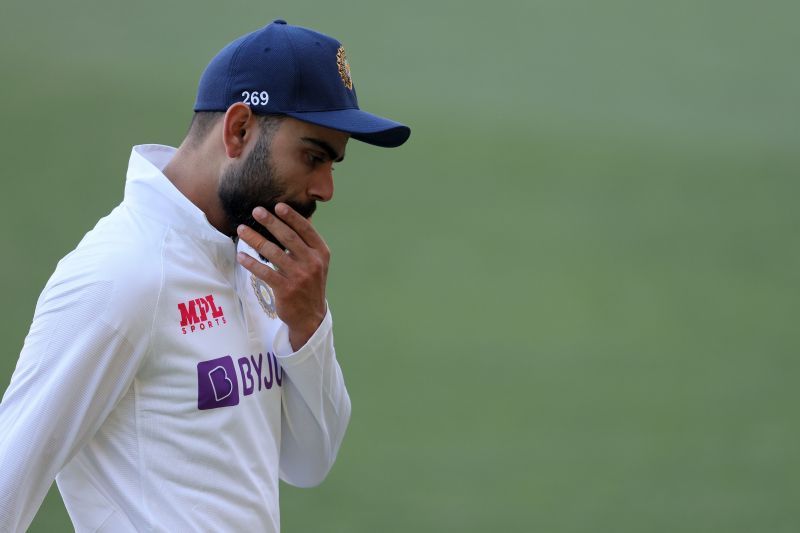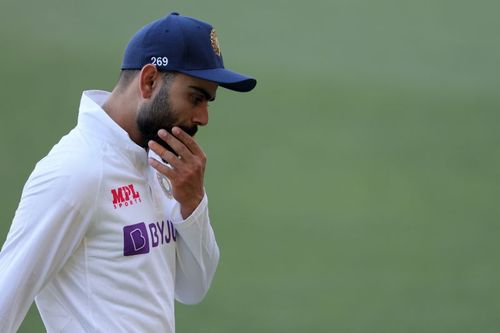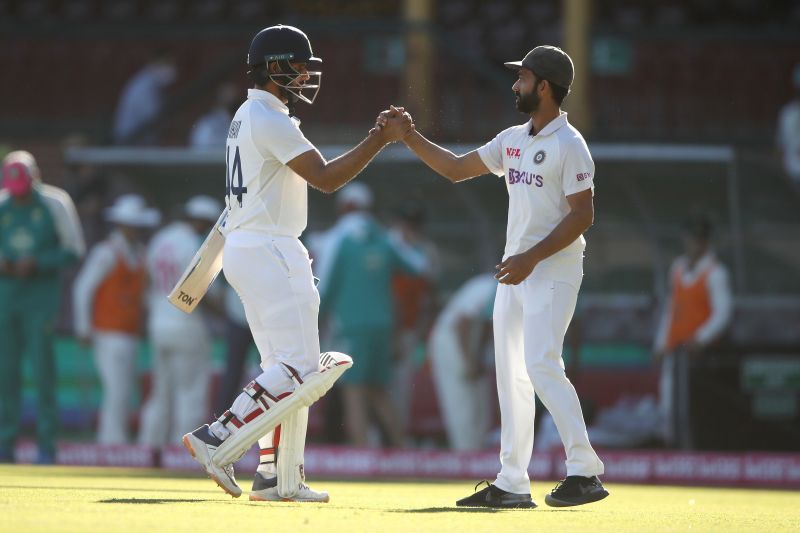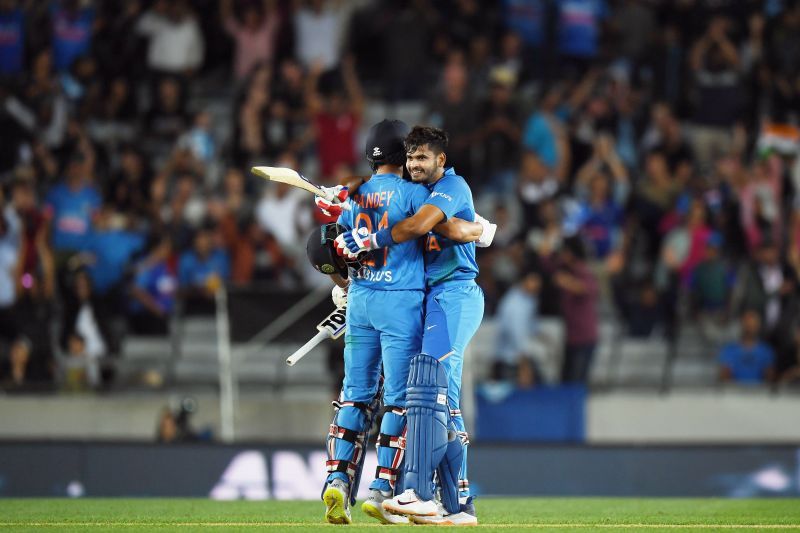
Test cricket's toughest batting phase - the third innings

On 25th February, 2021, in a manic rendition of Test cricket, India strode out at the Narendra Modi Stadium hoping to solidify their position and grind England into submission. In the first session, though, nothing of the sort transpired, meaning that the Three Lions skittled out the hosts for 145. In turn, the Men In Blue could only establish a 33-run lead – an arrears that could’ve easily been erased by England.
However, over the course of the next couple of hours, the tourists wilted spectacularly, with the Indian cricket team bundling them out for 81. Subsequently, the hosts only needed 40 runs in the fourth innings to establish a 2-1 lead in the series. And, unsurprisingly, they did so without batting an eyelid.
Inevitably, plenty of discussion surrounded England’s collapse, with many having different opinions on why the same came about. Though the pitch and the pink ball dominated a major chunk of those conversations, there was perhaps another aspect that flew under the radar – a facet that has become an increasingly common theme in modern Test cricket and one that might significantly shape how teams approach the longest form of the sport.
Over the years, there has been a consensus that the toughest phase to bat in Test cricket remains the fourth innings – a juncture when the pitch is supposed to be at its worst, making batting extremely tedious. To that end, there have been innumerable fixtures in Test cricket, wherein teams have capitulated in the final essay and handed the opposition the initiative.
More recently, though, there has been growing evidence that the third innings of the match, which is usually the penultimate essay, might just have become as difficult (if not more). In fact, none strengthened that theory more than England, just a few days ago.
As far as similar precedents in Test cricket are concerned, there is a considerable library to dive into, especially over the past couple of years.
Back in 2019, England were shot out for 67 in their first innings at Headingley against Australia. At that juncture, the Three Lions trailed the away side by 112 runs, which in the context of the game, seemed pretty enormous. However, post that, Australia couldn’t really muster the requisite tempo or the nous to set England a target that would be beyond the latter’s reach.

Consequently, Ben Stokes conjured arguably one of the most special Test knocks to pull a victory out of the fire. Though that might be put down to the all-rounder’s brilliance, the larger perspective suggested that Australia had just not played the third innings as they would’ve liked. Or to an extent, even allowed the Three Lions a sniff courtesy their inability to assess the situation adequately.
A year later, in another thrilling edition of Test cricket at Old Trafford, Pakistan found themselves in a similarly commanding position, having amassed a 107-run lead. However, in the third innings of the game, Pakistan succumbed to the pressure and folded for 169, setting England a 277-run target in the process.
The Three Lions, despite a rocky start, scaled down that total, with Chris Woakes and Jos Buttler being the protagonists. While there might again be a tendency to label their stupendous displays as an aberration, it highlighted that Pakistan had just not tided over what is becoming the most arduous batting phase in Test cricket.
Even during India’s historic series triumph Down Under in 2020-21, there were several instances where the team batting in the third innings let their guard down and enabled the opposition to script improbable victories.
At Adelaide, with the pink ball, India were annihilated in the third essay for 36 as Josh Hazlewood and Pat Cummins wreaked havoc. Subsequently, the visitors, despite gaining a lead after the first innings, were unable to optimally utilize the advantage and complete another victory in Test cricket.
A game later, Australia were guilty of being too lackadaisical as they scored at a tick under 2 runs per over, meaning that despite batting more than a 100 overs, they couldn’t accumulate a total capable of winning a game of Test cricket. Though they faced a deficit at the start of the third innings, their lack of aggression left a lot to be desired.

At the SCG, which was the penultimate game of the series, Australia were a little too subdued towards the end of Day 4, meaning that they couldn’t declare. Subsequently, they batted for a tad longer than ideal and offered India a glimmer to save the game. And, boy didn’t the tourists do so.
A few moons later, at the Gabba, which has been a fortress for Australia in Test cricket, India faced the prospect of batting more than 100 overs in the fourth innings. Or, if they were adventurous enough, they had to hunt down a 328-run target.
However, the circumstances could’ve been even more adverse, especially if Australia had been a lot more bellicose on Day 4. To put things into context, the hosts kept on batting without any intent, with Cameron Green, in particular, laboring to a 90-ball 37. That it came when Australia already enjoyed a 250-plus run lead, only added to their troubles.
In essence, the hosts neither gave themselves the requisite time to dismiss the Indians nor could they put up a total that would’ve been out of the tourists’ reach. Unsurprisingly, Rishabh Pant wielded his willow in gladiatorial fashion and breached the Australians’ fortress, for the first time in Test cricket since 1988.
Apart from the aforementioned matches, Sri Lanka, in their most recent assignment against England, felt the double-edged nature of the third innings of Test cricket when they disintegrated for 126 in the 2nd game, despite fashioning a 37-run lead prior to it. England grabbed the bull by the horns thereafter and propelled themselves to their second consecutive whitewash in Test cricket in Sri Lanka.
More recently, Bangladesh took a 171-run lead against West Indies at Chittagong in the 1st fixture of that particular series. In their third innings, though, the Tigers batted a tad sluggishly, although that still meant the away side had to score 395 in their fourth essay.
However, owing to Kyle Mayers’ incredible knock, the West Indies completed a remarkable turnaround, registering the fifth highest run chase ever in Test cricket.
Thus, there is plenty to hint that batting might have become quite tricky in the third innings in Test cricket. And, though one might be content to simply draw that conclusion, it is imperative that one gets to its root cause.
What has led to this change in Test cricket?
To put things bluntly, there isn’t a single factor that has contributed to the aforementioned period in Test cricket becoming perilous for batting teams. Rather, there are quite a few elements that have cumulatively led to such an outcome.
Firstly, the impact of white-ball cricket can’t be understated enough, for teams are now more confident in their ability to chase down tall scores in the fourth innings of Test cricket.
In simpler terms, they’ve become a lot more accustomed to transferring the pressure, meaning that bowling attacks have much more to think about – something that is in contrast to what unfolded in Test cricket previously.
Additionally, with the presence of countless analysts, it rarely happens that batsmen commit the same mistakes in their fourth innings, especially after being found out earlier in the match. Thus, it becomes a lot more onerous for the bowlers to get the better of them.
Most tellingly though, white-ball cricket, and in particular T20 cricket, has moulded Test cricket into being more reactive than proactive. Ever since the advent of the shortest format, teams have been willing to let the opposition set the game up before gauging it and planning a modus operandi accordingly.
Basically, sides these days barely ever flinch at an intimidating scoreboard. Instead, they view it as a window of opportunity to create something magnificent and etch their names in Test cricket folklore.
The aforementioned has affected Test cricket tactically as well as psychologically. On the former front, it has forced outfits to be increasingly circumspect and has made them unsure of what fourth-innings total would be sufficient.

As for the batsmen, white-ball cricket has allowed them to pace their chases excellently – again, something that shifts the onus onto the bowlers, for they are the ones expected to do the heavy lifting on Day 4 and 5.
Furthermore, the topsy-turvy nature of white-ball cricket has made outfits believe in themselves, no matter what. In turn, even in Test cricket, teams never feel that they are out of the game, courtesy their habit of turning the tables – something that regularly occurs in the shorter versions of the sport.
Thus, as things stand, it looks highly likely that Test cricket will continue evolving, wherein the third innings becomes just as taxing as the fourth innings. Having said that, there is immense quality across the cricketing fraternity for teams to adapt to it and become more prudent when it comes to decision making during that spell in Test cricket.
Yet, if they completely ignore such a shift, they might have to endure quite a few heartbreaks, considering the vagaries Test cricket and the fourth innings serves up.
After all, just a few days ago, England had the opportunity to surge ahead against India and reinforce their credentials as an all-conquering Test cricket outfit. However, they took their eye off the ball (quite literally too) and now find themselves rummaging through another lengthy session of introspection.
Perhaps, that should be enough to pay further heed to this trend then, shouldn’t it?